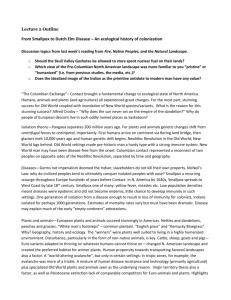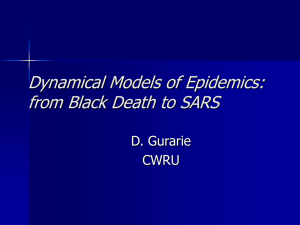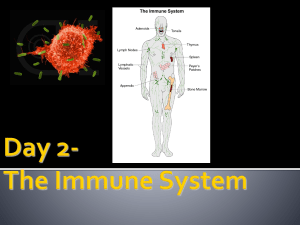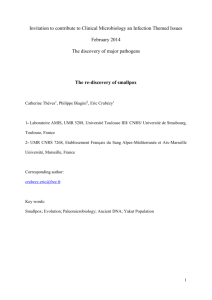POST TEST - Washoe County
advertisement
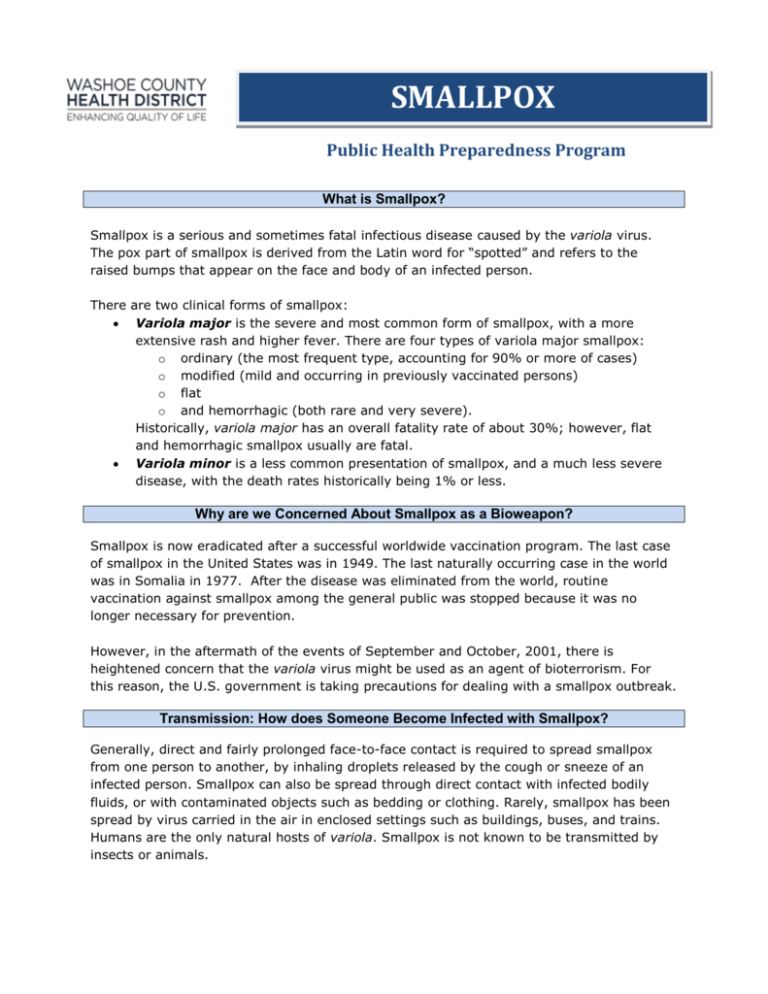
SMALLPOX Public Health Preparedness Program What is Smallpox? Smallpox is a serious and sometimes fatal infectious disease caused by the variola virus. The pox part of smallpox is derived from the Latin word for “spotted” and refers to the raised bumps that appear on the face and body of an infected person. There are two clinical forms of smallpox: Variola major is the severe and most common form of smallpox, with a more extensive rash and higher fever. There are four types of variola major smallpox: o ordinary (the most frequent type, accounting for 90% or more of cases) o modified (mild and occurring in previously vaccinated persons) o flat o and hemorrhagic (both rare and very severe). Historically, variola major has an overall fatality rate of about 30%; however, flat and hemorrhagic smallpox usually are fatal. Variola minor is a less common presentation of smallpox, and a much less severe disease, with the death rates historically being 1% or less. Why are we Concerned About Smallpox as a Bioweapon? Smallpox is now eradicated after a successful worldwide vaccination program. The last case of smallpox in the United States was in 1949. The last naturally occurring case in the world was in Somalia in 1977. After the disease was eliminated from the world, routine vaccination against smallpox among the general public was stopped because it was no longer necessary for prevention. However, in the aftermath of the events of September and October, 2001, there is heightened concern that the variola virus might be used as an agent of bioterrorism. For this reason, the U.S. government is taking precautions for dealing with a smallpox outbreak. Transmission: How does Someone Become Infected with Smallpox? Generally, direct and fairly prolonged face-to-face contact is required to spread smallpox from one person to another, by inhaling droplets released by the cough or sneeze of an infected person. Smallpox can also be spread through direct contact with infected bodily fluids, or with contaminated objects such as bedding or clothing. Rarely, smallpox has been spread by virus carried in the air in enclosed settings such as buildings, buses, and trains. Humans are the only natural hosts of variola. Smallpox is not known to be transmitted by insects or animals. What are the Signs and Symptoms of Smallpox? 7-17 days after exposure, the first symptoms of smallpox appear. These include fever, tiredness, head and body aches, and sometimes vomiting. The fever is usually high, in the range of 101 to 104°F. At this time, people are usually too sick to carry on their normal activities. This stage may last for 2 to 4 days. Next, a rash appears, first as small red spots on the tongue and in the mouth. A rash then appears on the skin, starting on the face and spreading to the arms and legs and then to the hands and feet. Usually the rash spreads to all parts of the body within 24 hours. The rash becomes raised bumps and the bumps become “pustules”, which are raised, usually round and firm to the touch as if there’s a small round object under the skin. The pustules begin to form a crust and then scab. By the end of the second week after the rash appears, most of the sores have scabbed over. The scabs begin to fall off, leaving scars. Most scabs will have fallen off three weeks after the rash first appears. How Soon do Infected People get Sick? Incubation period after exposure to the virus averages about 12-14 days but can range from 7-17 days. During the incubation period, a person is not contagious and may feel fine. How is Smallpox Treated? There is no proven treatment for smallpox. However, providing a patient supportive care can help alleviate some of the symptoms. Can a Person Exposed to Smallpox Avoid Becoming Sick? The smallpox vaccine, which was routinely administered to Americans until 1972, is a highly effective protection against the disease when given before exposure to the virus. If the vaccine is given to a person within four days of exposure to smallpox, it may lessen the severity of the disease, or possibly prevent illness. Would Enough Vaccine be Available in the Event of a Smallpox Outbreak? Yes. National and state public health officials have large supplies of vaccine needed in the event of a bioterrorism attack involving smallpox. What is the Washoe County Health District Doing to Prepare for a Smallpox Outbreak? In the event of a weaponized smallpox outbreak, the Washoe County Health District will announce detailed instructions on how to obtain vaccine through a point of dispensing (POD) site. This information will be available through the media and the Washoe County Health District website. Source: www.cdc.gov

